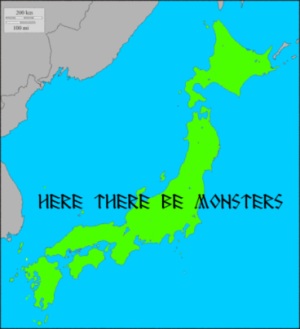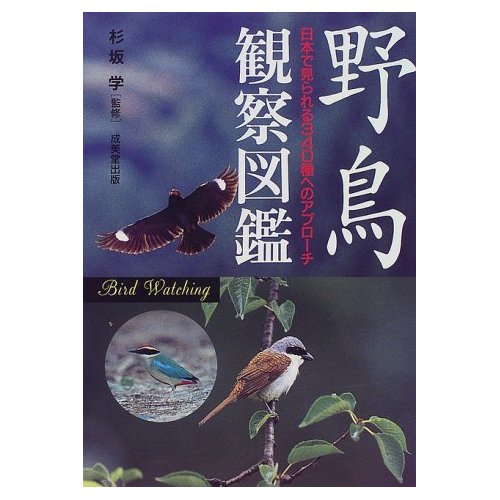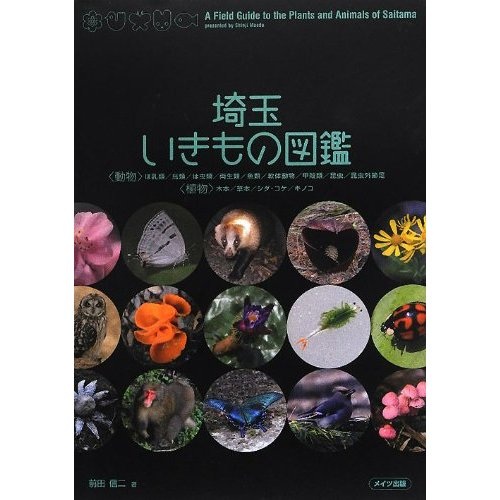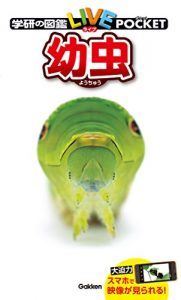Hi blog.
It’s well into March, and not a single post. Spring has finally arrived – we’ve reached the stage when the days with double digit maximums outnumber those with only single digits. I’ve even seen turtles basking in the late morning sun. Winter’s claws haven’t gone altogether, however. Cold rainy days are to be expected, and the Japanese have a term for this kind of weather – sankan-shion (三寒四温), literally “three cold, four warm”, meaning that three days of cold weather will be followed by four days of cold weather.
Some time back I said that I would get around to talking about the killing of the elephants at Ueno Zoo during the war, and its horrible re-telling in the Sunshine textbook. I’ve been feeling more than a little cynical lately about Japan’s selective memory of events 1905-1945, so that time has come.
I’ll give you the full text first, then my analysis.
Faithful Elephants
Many years ago, there were three wonderful elephants at the Ueno Zoo. The elephants were John, Tonky, and Wanly. They could do tricks. Visitors to the zoo loved to see their tricks.
Japan was at war then. Little by little the situation was getting worse. Bombs were dropped on Tokyo every day.
If bombs hit the zoo, dangerous animals will get away and harm the people of Tokyo. So, the Army ordered the zoo to kill all the dangerous animals such as lions, tigers, and bears.
Before long, it was time to kill the three elephants. The zookeepers did not want to kill them, but they had to follow the orders. They started with John.
John loved potatoes, so they gave him poisoned potatoes together with good ones. But John was so clever that he ate only the good potatoes. Then they tried to give him an injection. But John’s skin was too hard for the needles to go through. When this did not work, they decided to give him no food. Poor John died in seventeen days.
Then the time came for Tonky and Wanly. They always looked at people with loving eyes. They were sweet and gentle-hearted.
However, the elephant keepers had to stop giving them anything to eat. When a keeper walked by their cage, they stood up and raised their trunks high in the air. They did their tricks because they were hoping to get food and water.
Everyone at the zoo said with tears, “If they can live a few more days, the war may be over and they will be saved.”
Tonky and Wanly could no longer move. They lay down on the ground, but their eyes were beautiful.
When an elephant keeper came to see them, they looked so weak. He became too sad to go back to see them.
Bombs continued to drop on Tokyo. And a few days later, Tonky and Wanly died. Later, when the bodies of the elephants were examined, nothing was found in their stomachs — not even one drop of water.
Today, the three elephants rest in peace with other animals under the monument at the Ueno Zoo.
Now the analysis, with relevant pieces of text in quotations, and my comments in bold text. Be warned, this won’t be pretty.
OK, let’s begin with the title: Faithful Elephants? The original Japanese title translates as “Pitiful Elephants”, which is much closer to reality. The story contains no acts of faithfulness.
“Many years ago, there were three wonderful elephants at the Ueno Zoo. The elephants were John, Tonky, and Wanly. They could do tricks. Visitors to the zoo loved to see their tricks.”
Comment: Actually, Jon, Tonki and Wanli. Jon and Tonki were purchased from India, and Wanli was a present from the Thai State Youth Organisation, but was frequently referred to as “Hanako”.
It seems that Jon, despite being a trained elephant, started to ignore keeper’s commands and was becoming dangerous.
Also note that “they could do tricks” implies that the elephants were trained in a similar manner to circus animals.

Elephants at Ueno Zoo, from the zoo’s newsletter, March 20, 1938. More of a circus than a zoo display, I think.
“Japan was at war then. Little by little the situation was getting worse. Bombs were dropped on Tokyo every day.”
Comment: The events described in this story happened in August-September, 1943 – some fourteen months before the Tokyo air raids. Bombs were NOT dropped on Tokyo every day. This is a straight out distortion of the facts.

A little kid in an air-raid helmet visiting the zoo in 1941. Japan had not been bombed at all in 1941.
“If bombs hit the zoo, dangerous animals will get away and harm the people of Tokyo.”
Comment: Notice the incorrect grammar in a textbook purporting to teach grammar? To make matters worse, this is not the only instance of a type 2 conditional being used in place of a type 3 in the Sushine series. If you don’t want to use a certain conditional because it is not taught at junior high school level, then use a different expression!!
“So, the Army ordered the zoo to kill all the dangerous animals such as lions, tigers, and bears.”
Comment: It was not the military who ordered the killing, but the governor of Tokyo – one Shigeo Odachi – who had, prior to this appointment, served as mayor of occupied Singapore.
It is also worth noting that after the war, Odachi managed to land a very influential position – Minister of Education, no less. I am of the opinion that this is the reason he evades mention in retellings like this.
Some 27 animals fell under the category of dangerous and were disposed of. Yet, despite the zoo having two Winchester rifles, all these animals were poisoned, clubbed, stabbed, garrotted or starved.
“Before long, it was time to kill the three elephants. The zookeepers did not want to kill them, but they had to follow the orders. They started with John.”
Comment: Actually, the process for killing the bull elephant Jon was started on August 13th, 1943, before the order for disposing of dangerous animals was given.
“John loved potatoes, so they gave him poisoned potatoes together with good ones. But John was so clever that he ate only the good potatoes. Then they tried to give him an injection. But John’s skin was too hard for the needles to go through. When this did not work, they decided to give him no food. Poor John died in seventeen days.”
Comment: While the potato story appears to be true, the poisoned needle story is suspicious at best. Zoo records show that the elephant Tonki had been given injections in the past, and that it was possible to take blood samples (presumably via needle) from the dying elephants later. Critics are of the opinion that starvation was intended from the beginning.

Jon is dead.
“Bombs continued to drop on Tokyo. And a few days later, Tonky and Wanly died.”
Comment: The narrative repeats the falsehood about the air raids. Furthermore, there was a memorial service held for the three dead elephants held on September 4th, 1943. This is noteworthy because the two female elephants were still alive but slowly and painfully starving to death! Wanli died a full week later, and Tonki (the most popular of the three elephants) lasted until September 23rd.

Tokyo governor general Odachi Shigeo and members of the Youth Society for Buddhist Tradition (Shido Bukkyo Seinen Dento Kai) leading the procession to the Memorial Ser vice for Animal Martyrs on September 4, 1943.
Analysis ends here.
It is also worth remembering that other animals were later starved to death – the hippopotamuses being a notable example. The three giraffes were the only large animals to survive to the end of the war.
The zoo remained open throughout the war, and some enclosures were used to raise animals for meat. Also noteworthy was the imprisonment and display of downed bomber airman Ray Halloran in the old tiger enclosure in 1945.

From the pen of Ray Halloran himself. Links to his writings often get broken, but what he had to say about reconciliation and forgiveness are valuable lessons.
For a fuller understanding of the situation, please read the excellent and extensively researched article Starving the Elephants: The Slaughter of Animals in Wartime Tokyo’s Ueno Zoo by Frederick S. Litten.
The elephants and other animals were more victims of a bloody-minded administration than innocent victims of war, and the narrative has been changed to protect that administration.







“The elephants and other animals were more victims of a bloody-minded administration than innocent victims of war.”
Obviously the bombs had nothing to do, its people like you who killed those elephants…
Please read the post again.
No bombs were being dropped on Tokyo when the elephants were deliberately starved to death. Requests by zoo staff to relocate the females were vetoed by the city government.
Nor I do not appreciate ad hominem attacks.
So sad! Thank you for sharing this. I too have mixed feelings about zoos. Some of them are quite good and others are just a concrete hell for the animals…
Thank you for this – I used to have a book about those elephants when I was 5years old , it was very sad and shocking story but we must not forget.
i often think of sankan shion at this time of year 😉
Hi Midori,
Yes, it is a sad story, but it’s important to tell the truth behind it. The elephants could have been saved if the authorities had approved of ideas to move them.
There is too much propaganda in textbooks.
I understand what you mean.
I personally don’t like an idea of zoo and saw a snow leopard in Tokyo zoo on you tube . Does Japan have an animal right movement ?
I’m pretty sure -I saw people quietly protesting against the use of animals in a circus.
I have mixed feelings about zoos – they help raise awareness, not to mention breeding programs. Although I’d rather see animals in the wild.